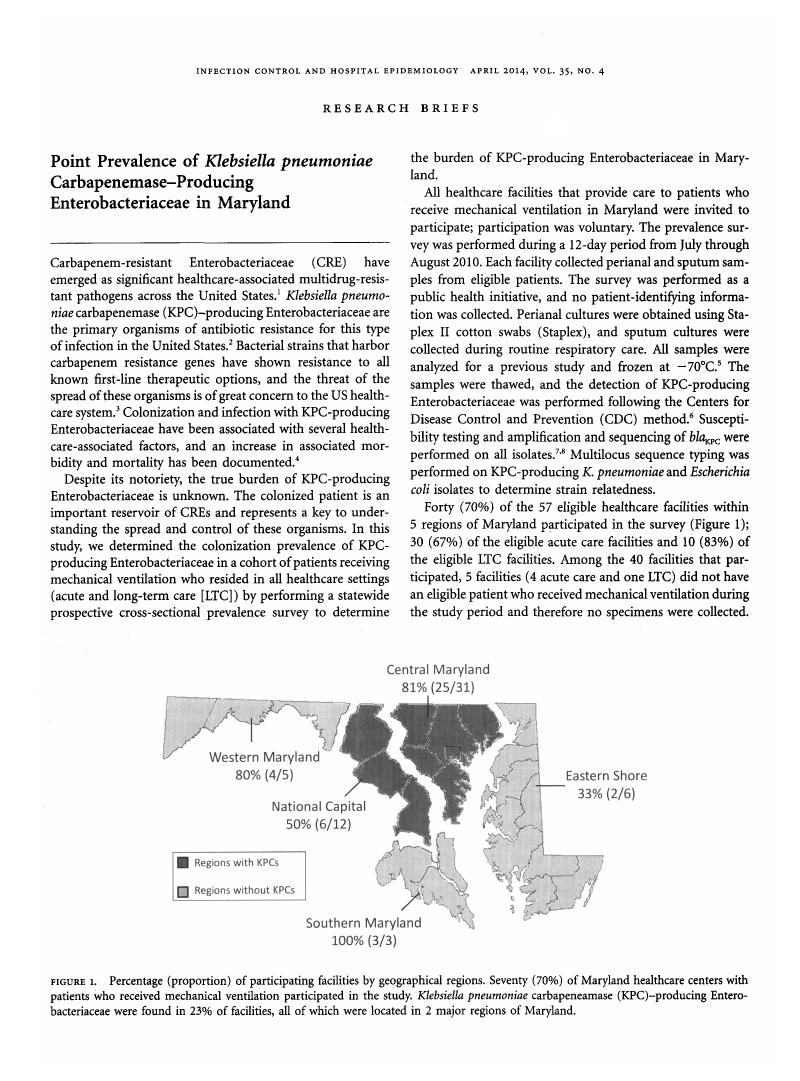Crossref Citations
This article has been cited by the following publications. This list is generated based on data provided by Crossref.
Jean, Shio-Shin
Lee, Wen-Sen
Lam, Carlos
Hsu, Chin-Wang
Chen, Ray-Jade
and
Hsueh, Po-Ren
2015.
Carbapenemase-Producing Gram-Negative Bacteria: Current Epidemics, Antimicrobial Susceptibility and Treatment Options.
Future Microbiology,
Vol. 10,
Issue. 3,
p.
407.
Perez, Federico
and
Villegas, Maria Virginia
2015.
The role of surveillance systems in confronting the global crisis of antibiotic-resistant bacteria.
Current Opinion in Infectious Diseases,
Vol. 28,
Issue. 4,
p.
375.
Poole, K.
George, R.
Decraene, V.
Shankar, K.
Cawthorne, J.
Savage, N.
Welfare, W.
and
Dodgson, A.
2016.
Active case finding for carbapenemase-producing Enterobacteriaceae in a teaching hospital: prevalence and risk factors for colonization.
Journal of Hospital Infection,
Vol. 94,
Issue. 2,
p.
125.
Reuben, Jacqueline
Donegan, Nancy
Wortmann, Glenn
DeBiasi, Roberta
Song, Xiaoyan
Kumar, Princy
McFadden, Mary
Clagon, Sylvia
Mirdamadi, Janet
White, Diane
Harris, Jo Ellen
Browne, Angella
Hooker, Jane
Yochelson, Michael
Walker, Milena
Little, Gary
Jernigan, Gail
Hansen, Kathleen
Dockery, Brenda
Sinatro, Brendan
Blaylock, Morris
Harmon, Kimary
Iyengar, Preetha
Wagner, Trevor
and
Nelson, Jo Anne
2017.
Healthcare Antibiotic Resistance Prevalence – DC (HARP-DC): A Regional Prevalence Assessment of Carbapenem-Resistant Enterobacteriaceae (CRE) in Healthcare Facilities in Washington, District of Columbia.
Infection Control & Hospital Epidemiology,
Vol. 38,
Issue. 8,
p.
921.
Pitout, Johann D. D.
Baquero, Fernando
Bouza, Emilio
Gutiérrez-Fuentes, J.A.
and
Coque, Teresa M.
2018.
Transmission Surveillance for Antimicrobial-Resistant Organisms in the Health System.
Microbiology Spectrum,
Vol. 6,
Issue. 5,
Pitout, Johann D.D.
2019.
Microbial Transmission.
p.
215.
Li, Shuang
Liu, Jingxian
Chen, Feng
Cai, Kang
Tan, Jintong
Xie, Wei
Qian, Rong
Liu, Xiaoqin
Zhang, Wenhong
Du, Huimin
Liu, Ying
and
Huang, Lisu
2020.
A risk score based on pediatric sequential organ failure assessment predicts 90-day mortality in children with Klebsiella pneumoniae bloodstream infection.
BMC Infectious Diseases,
Vol. 20,
Issue. 1,
Hayakawa, Kayoko
Nakano, Ryuichi
Hase, Ryota
Shimatani, Michitsugu
Kato, Hideaki
Hasumi, Jumpei
Doi, Asako
Sekiya, Noritaka
Nei, Takahito
Okinaka, Keiji
Kasahara, Kei
Kurai, Hanako
Nagashima, Maki
Miyoshi-Akiyama, Tohru
Kakuta, Risako
Yano, Hisakazu
and
Ohmagari, Norio
2020.
Comparison between IMP carbapenemase-producing Enterobacteriaceae and non-carbapenemase-producing Enterobacteriaceae: a multicentre prospective study of the clinical and molecular epidemiology of carbapenem-resistant Enterobacteriaceae.
Journal of Antimicrobial Chemotherapy,
Vol. 75,
Issue. 3,
p.
697.
Chen, Hsin-Yu
Jean, Shio-Shin
Lee, Yu-Lin
Lu, Min-Chi
Ko, Wen-Chien
Liu, Po-Yu
and
Hsueh, Po-Ren
2021.
Carbapenem-Resistant Enterobacterales in Long-Term Care Facilities: A Global and Narrative Review.
Frontiers in Cellular and Infection Microbiology,
Vol. 11,
Issue. ,



